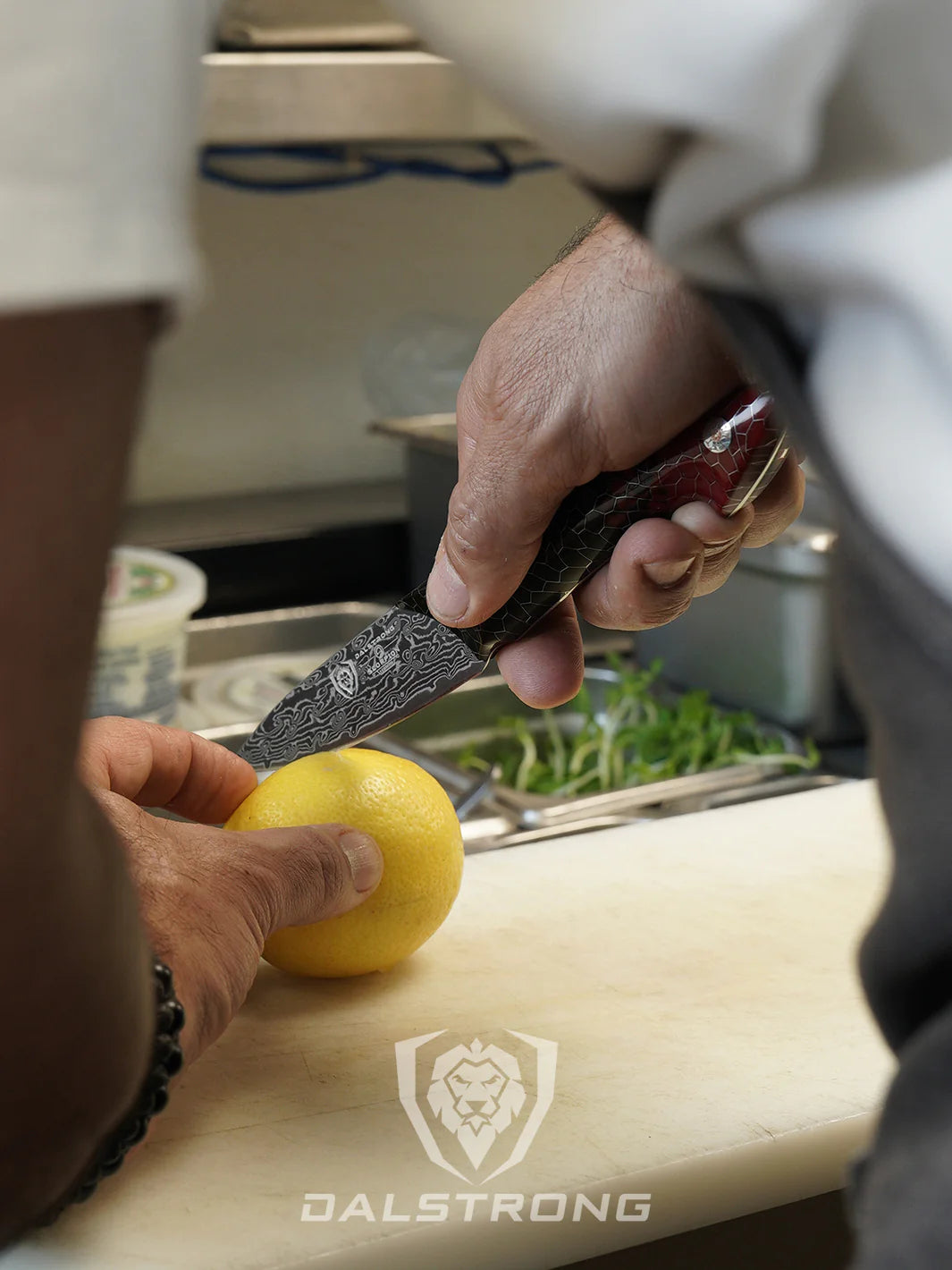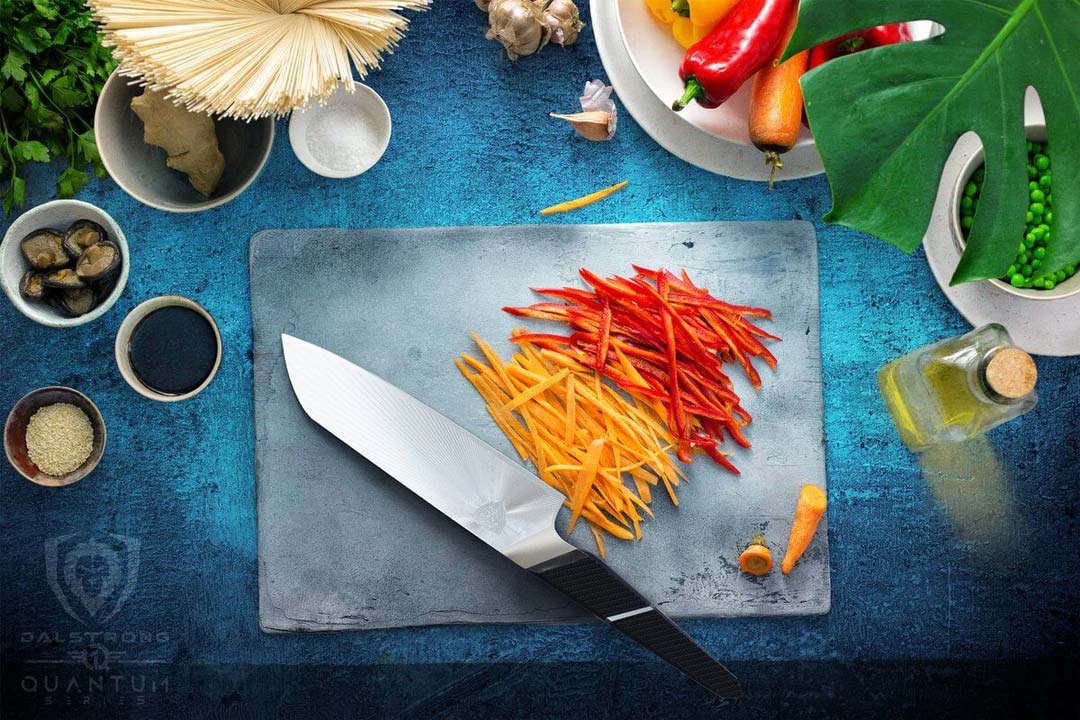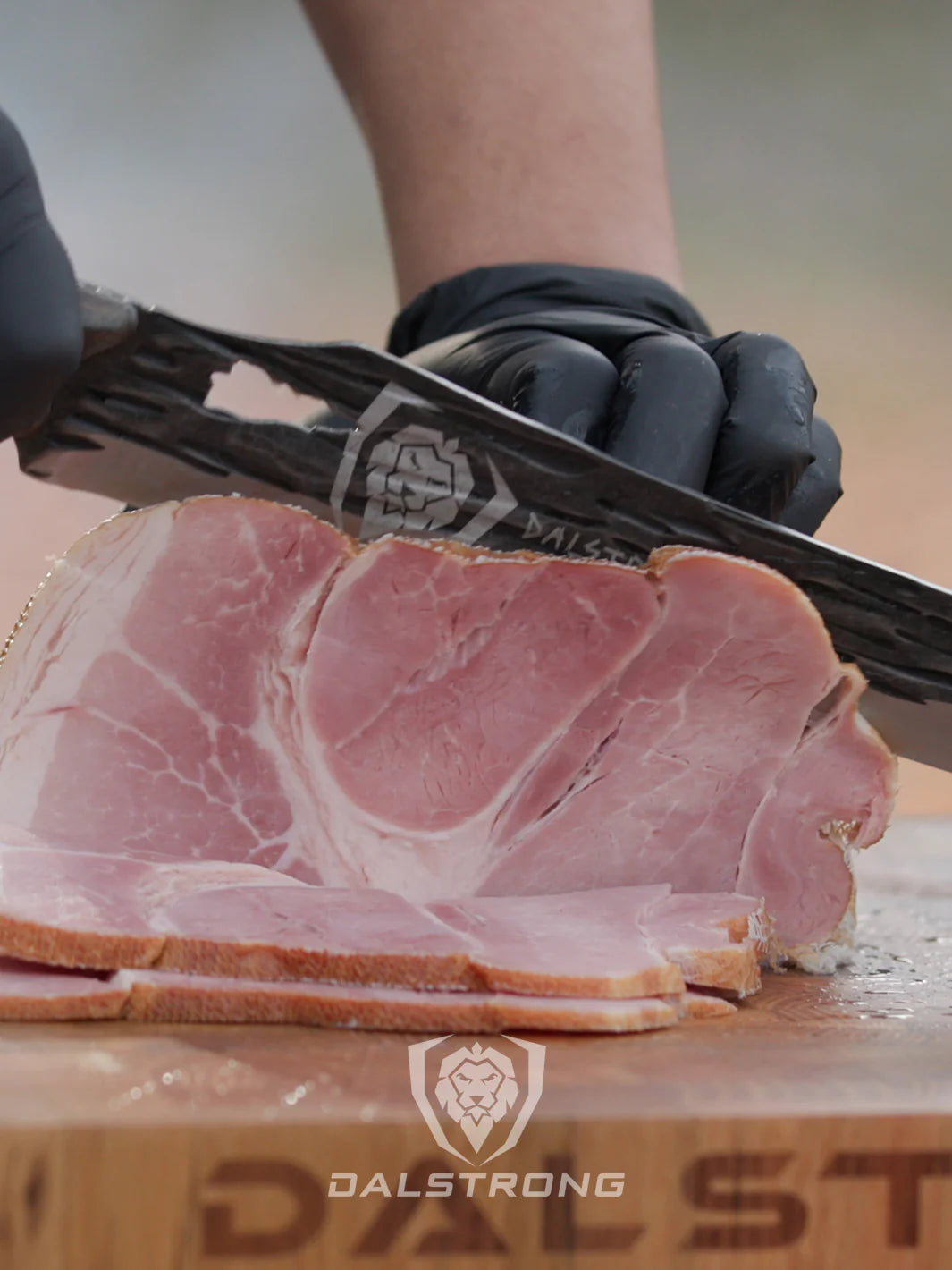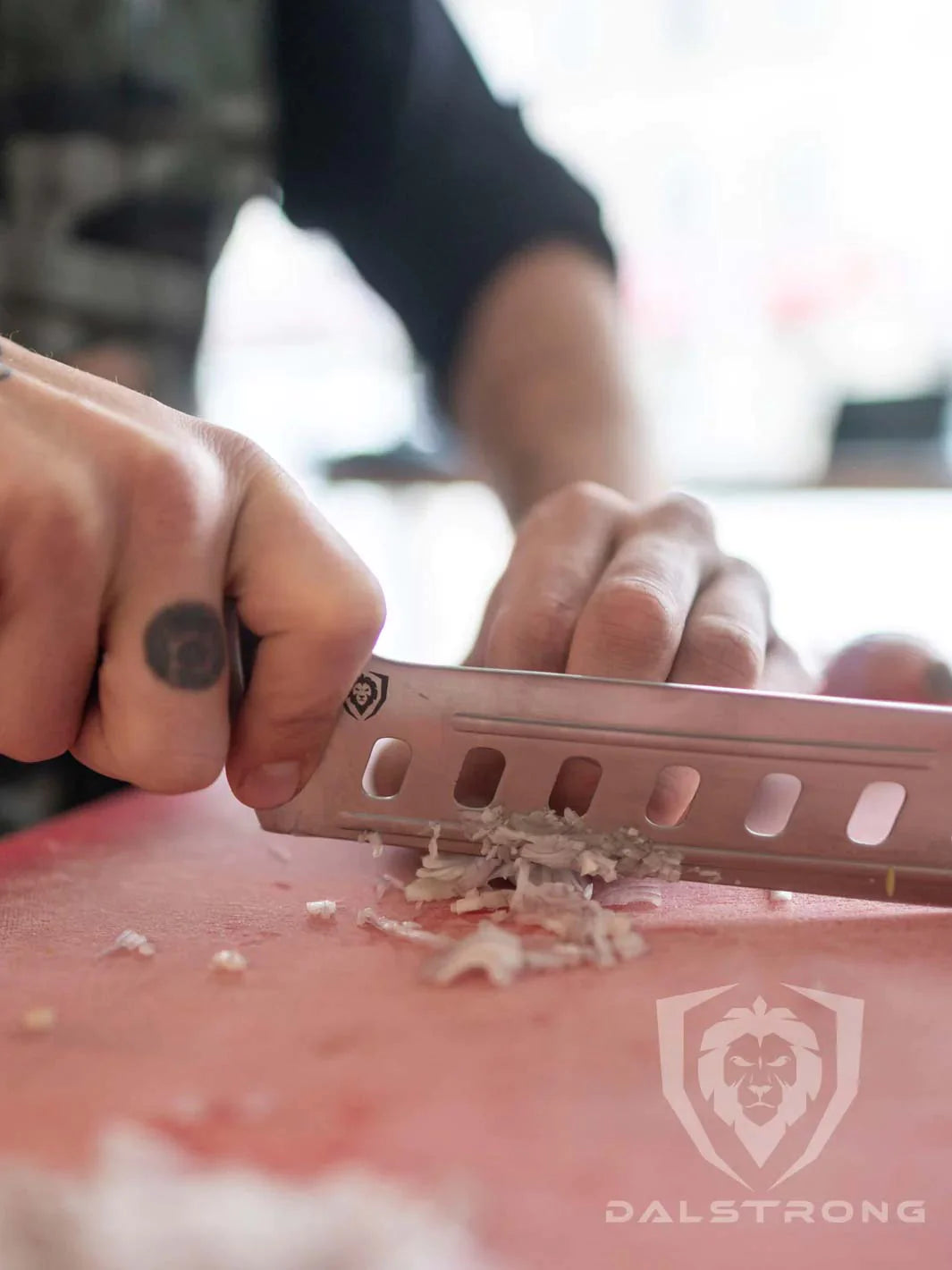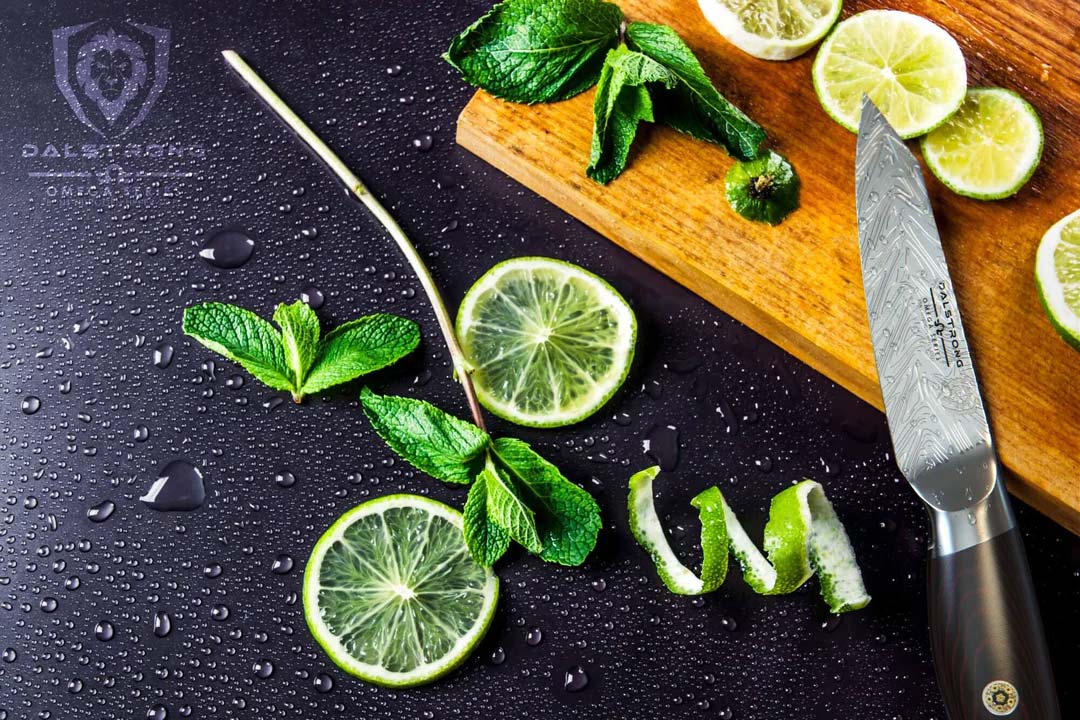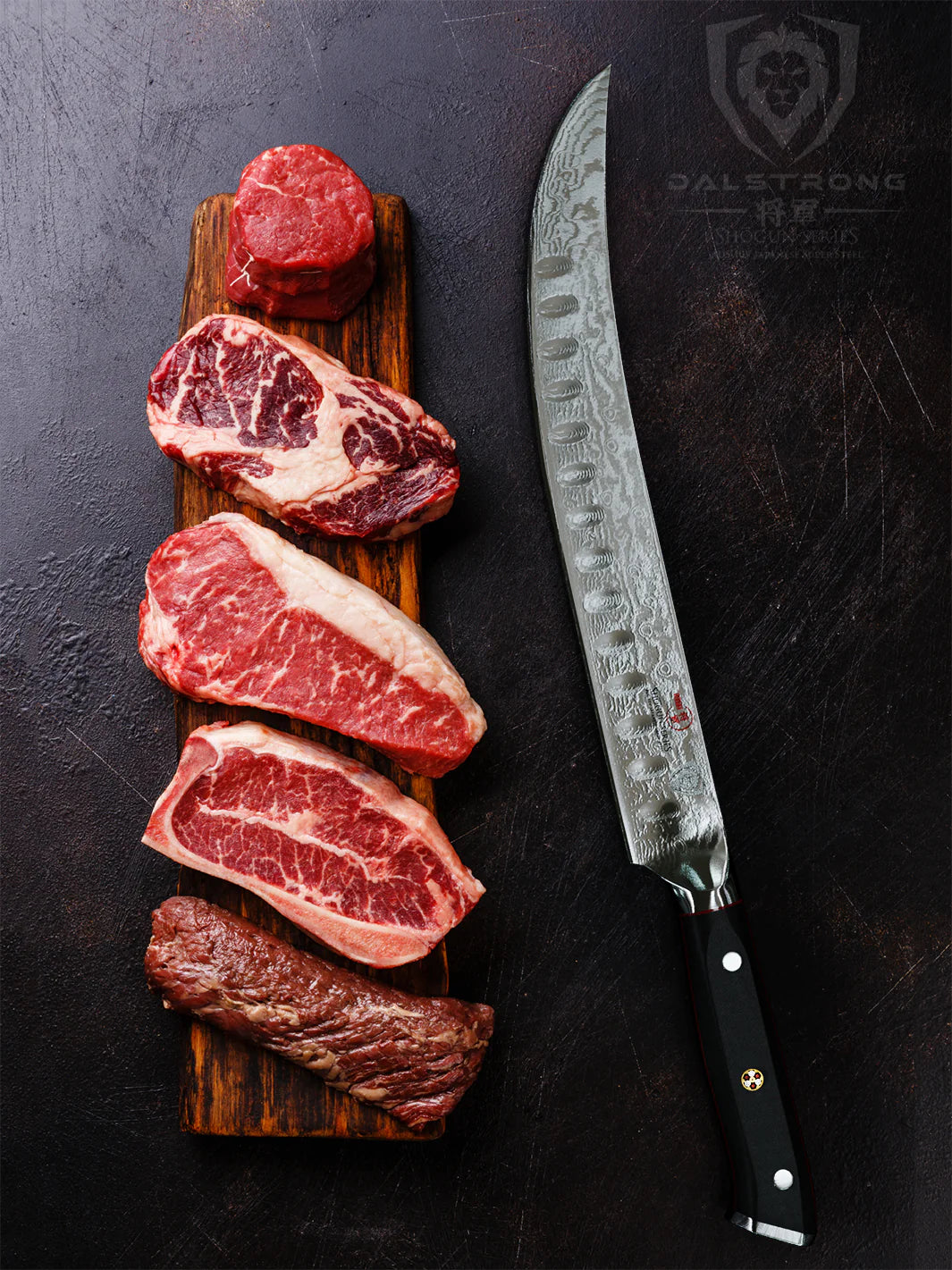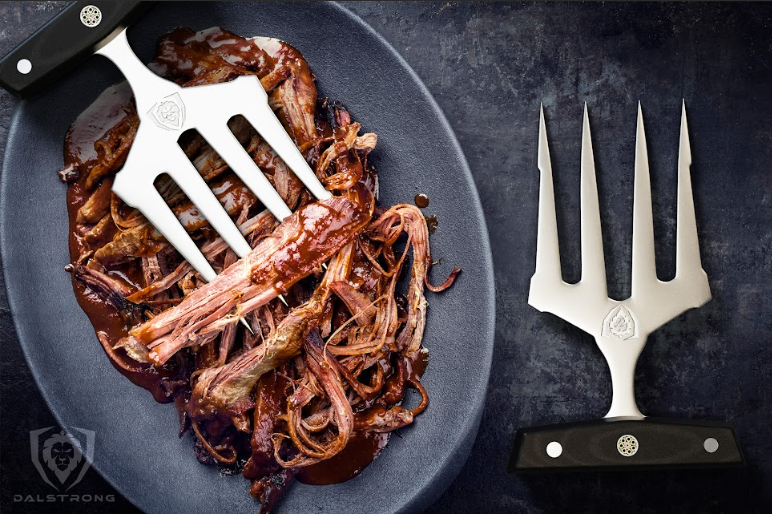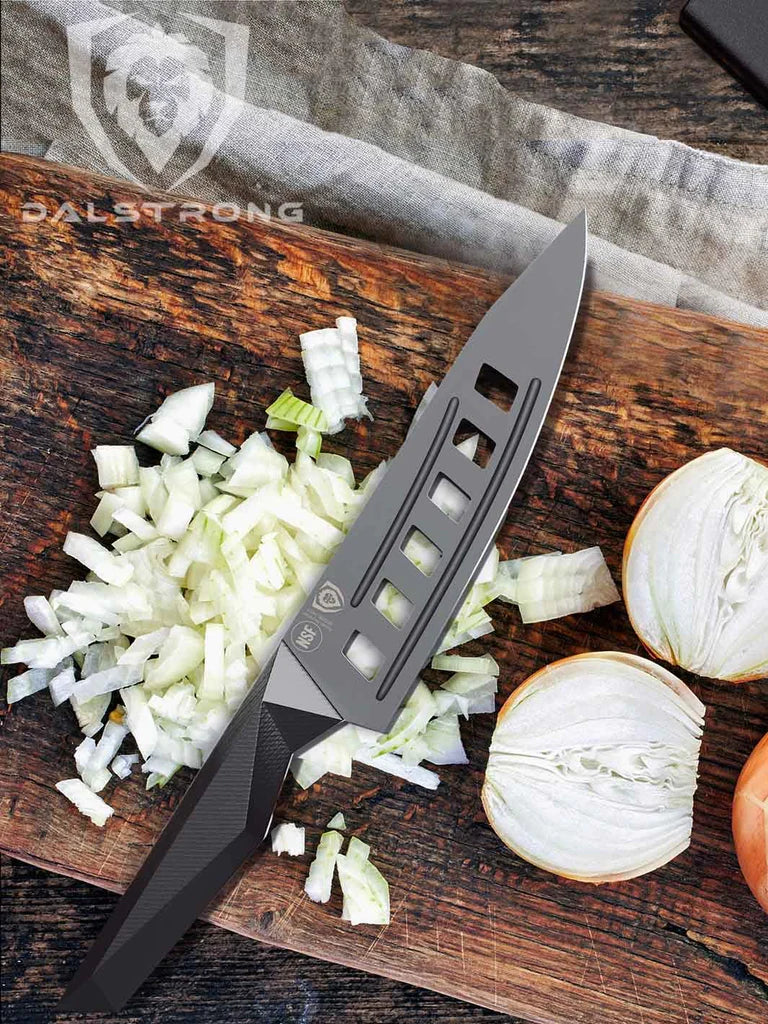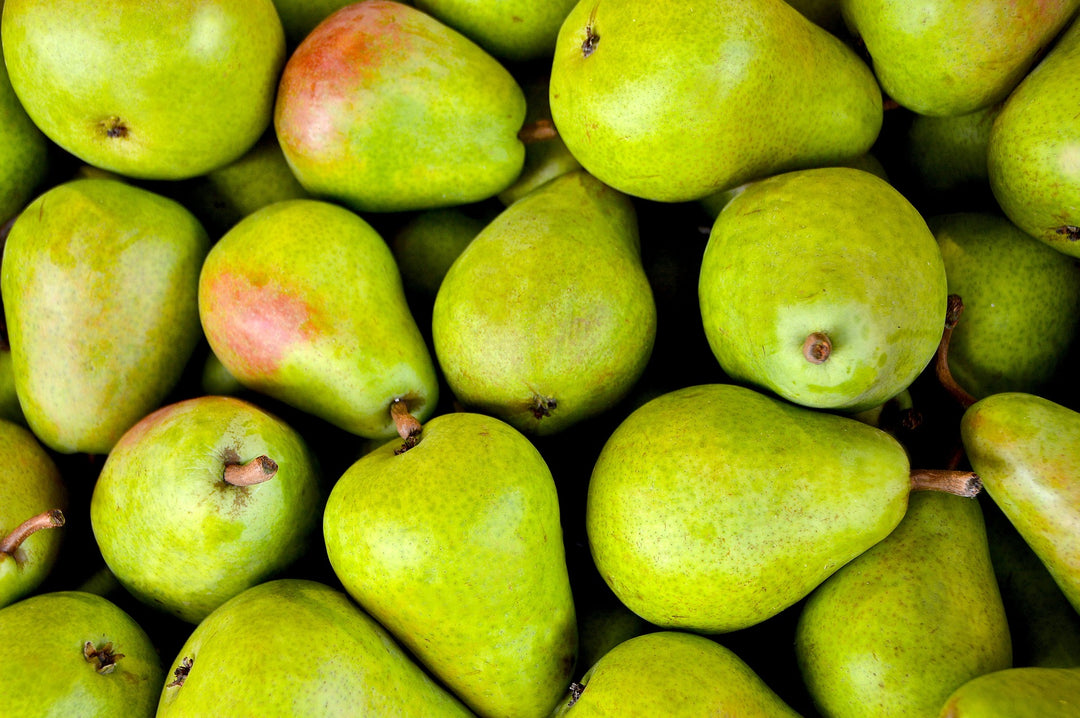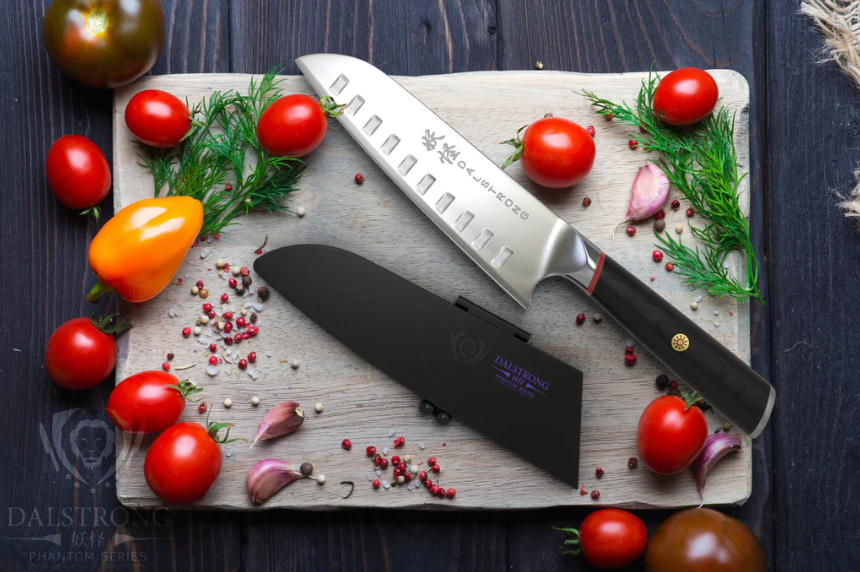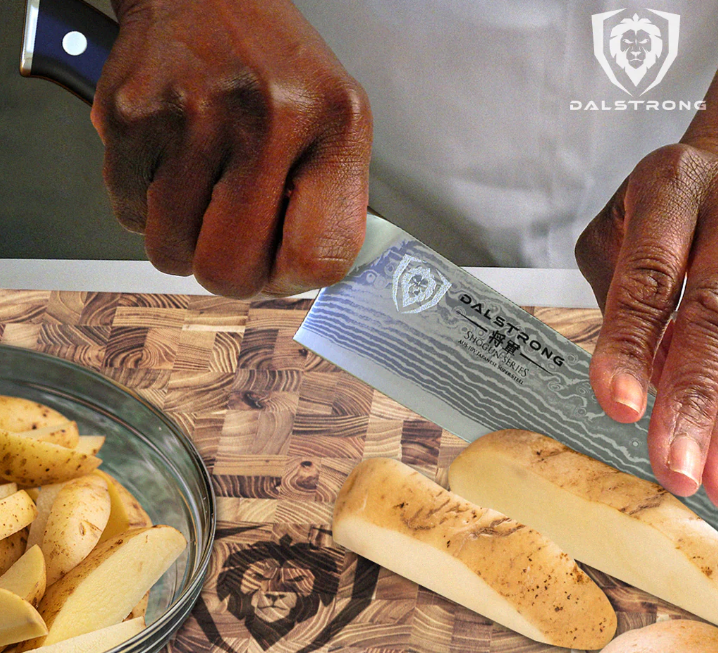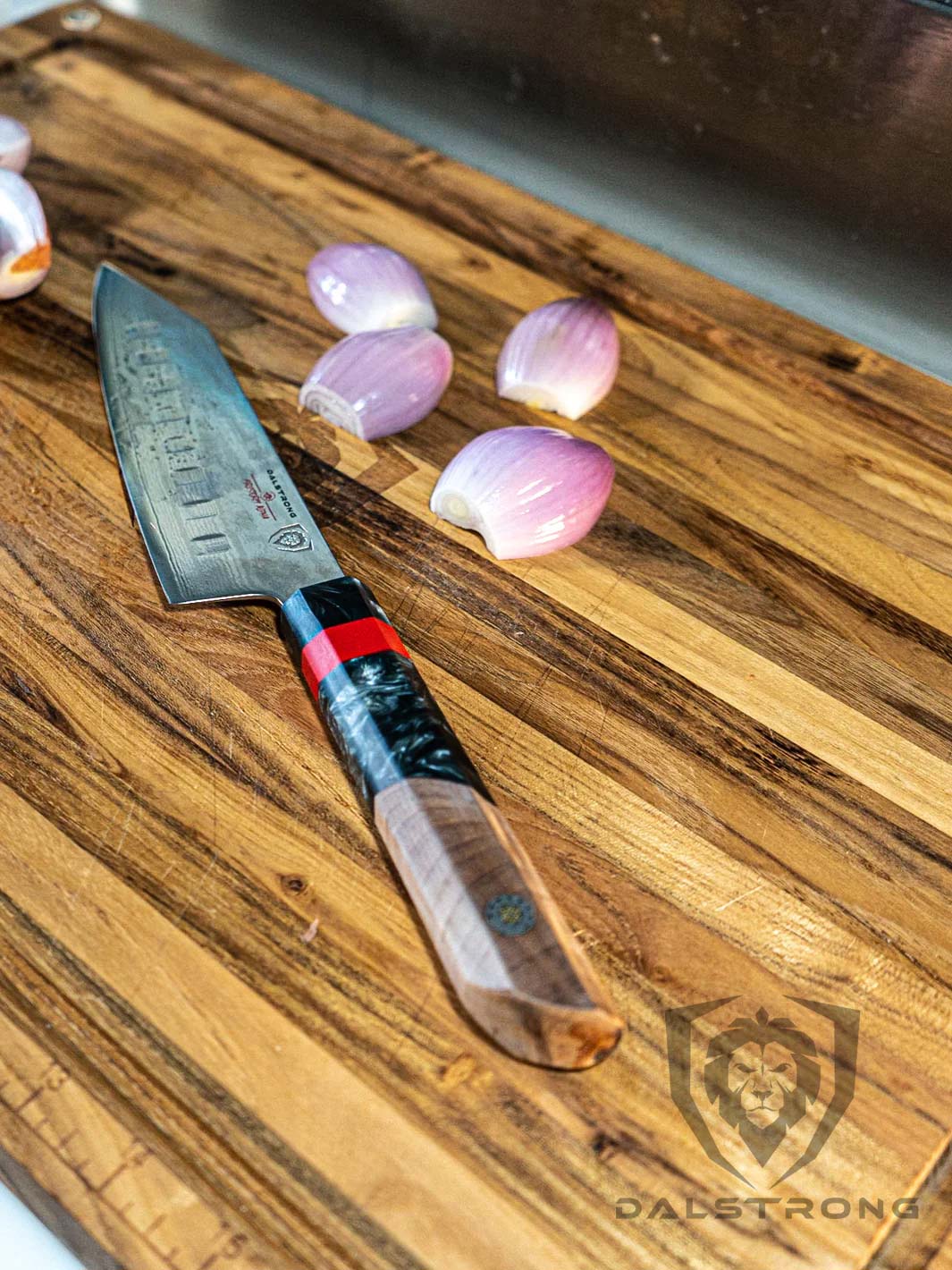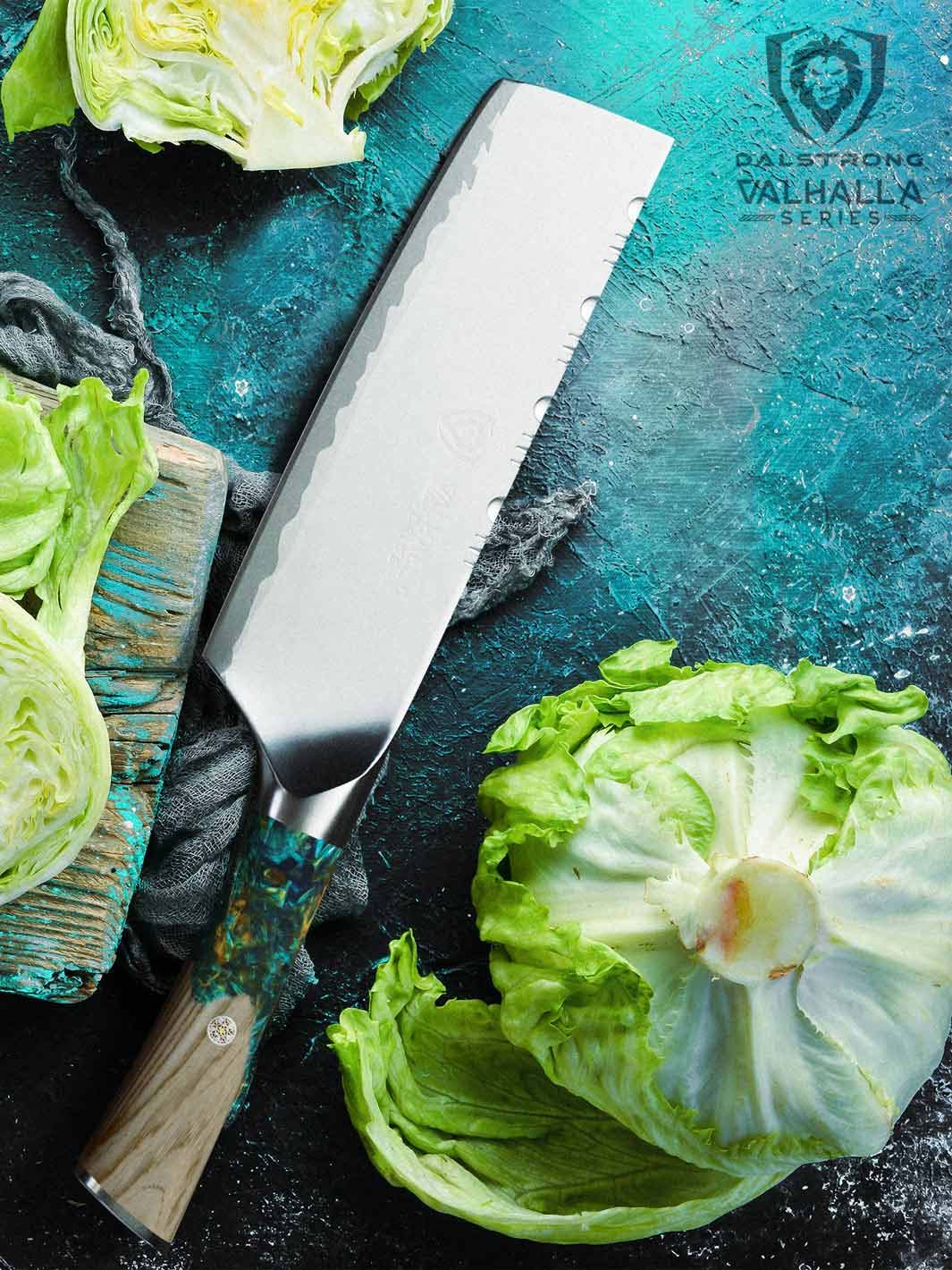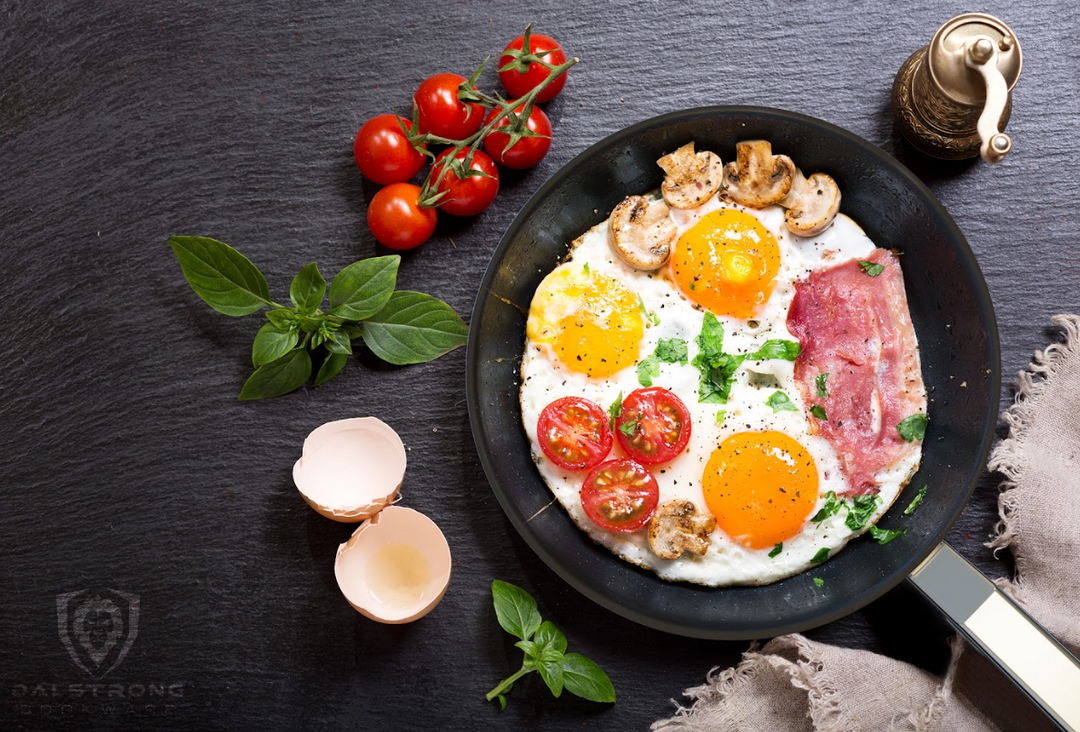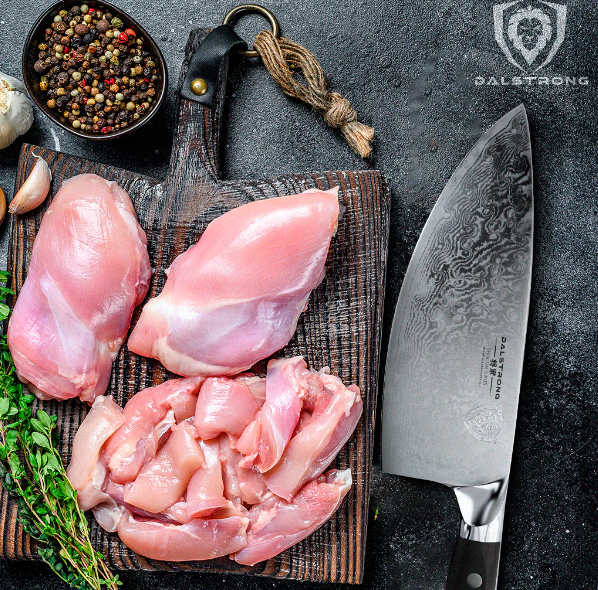Easy Step-By-Step Guide On How To Butterfly A Chicken Breast Fast
 Curved Fillet Knife 6" | Gladiator Series | NSF Certified | Dalstrong ©
Curved Fillet Knife 6" | Gladiator Series | NSF Certified | Dalstrong ©
Quick Overview: How To Butterfly A Chicken Breast
- Place the chicken breast smooth side up.
- Hold the knife parallel to the board and slice horizontally.
- Open like a book and hinge at the uncut side.
- Optional: flatten with a mallet between plastic wrap.
- Ready to season, stuff, or cook as needed.
Butterflying a chicken breast is a culinary technique that involves splitting the meat in half, resulting in a thinner and more uniformly shaped piece. This method offers various advantages when preparing chicken dishes for a simple dinner or big dinner party at home. By following a few simple steps, not only can you cook quickly and achieve a more even cooking, but also increase flavor absorption from marinades and fillings. Whether you're grilling, sautéing, or baking your favorite chicken dinner recipes, mastering the art of butterflying opens up a world of culinary possibilities.
This guide provides a concise, step-by-step explanation of how to effectively butterfly a chicken breast, enhancing your cooking skills and culinary repertoire.
1. How To Choose Fresh Chicken Breast
 Boning Knife 6" | Quantum 1 Series | Dalstrong
Boning Knife 6" | Quantum 1 Series | Dalstrong
Choosing fresh chicken breasts involves using your senses to assess the appearance, smell, and feel of the meat. Here are some tips to help you choose fresh chicken breast all the time.
Appearance
Look for chicken breasts that have a pale pink color. Avoid any with grayish or yellowish tints, as these could indicate aging or spoilage. The skin should be smooth and free from blemishes or discoloration. Check for any signs of excessive moisture or ice crystals on the surface, which could suggest that the chicken has been thawed and refrozen.
Smell
Give the chicken a gentle sniff. Fresh chicken should have a neutral, clean smell. If you detect any sour, ammonia-like, or off-putting odors, it's a sign of spoilage, and you should avoid that piece.
Texture and Feel
Chicken breasts should feel firm to the touch and have a consistent texture. Avoid meat that feels mushy or slimy, as these are indicators of spoilage. Run your fingers over the surface. If you notice any sticky or tacky residue, it might suggest that the chicken has been stored improperly.
Packaging and Labels
Check the packaging for any punctures, tears, or damage that could compromise the chicken's quality and safety. Read the sell-by or use-by date on the package to ensure you're buying the freshest possible chicken. Don't choose packages that are close to or past the expiration date.
Purchase Location
Buy chicken breasts from reputable and reliable sources, such as reputable grocery stores, butcher shops, or farmers' markets. They are more likely to follow proper storage and handling practices.
Handling
If you're planning to buy chicken breasts, it's a good idea to make it one of your last stops during your shopping trip. This way, you can reduce the time the meat spends outside of proper refrigeration.
Storage
Once you've purchased the chicken, be sure to store it properly. Keep it in the coldest part of your refrigerator (usually the back) at a temperature of 32°F - 40°F (0°C to 4°C). If you're not planning to use the chicken within a day or two, consider freezing it to maintain its freshness.
In case you cannot find pre-cut chicken breast, consider buying a whole chicken and butchering it at home. Now you have more chicken meat to create your favorite chicken recipes. Check out this helpful video below to guide you in butchering and sectioning chicken effortlessly.
2. How To Butterfly A Chicken Breast Step-By-Step
Shadow Black Series | 8" Chef Knife | Dalstrong
Butterflying a chicken breast involves cutting it horizontally to create a thinner, more even piece of meat. This technique is commonly used for cooking chicken breasts more quickly in uniform thickness, especially when cooking them on the grill or making stuffed chicken.
Here's a step-by-step guide:
Tools You'll Need:
- Chicken breast
- Cutting board
- Sharp knife
Instructions:
- Prepare the Chicken Breast. Get a clean cutting board and place the chicken breast on it. If the chicken breast is very thick, you might want to pound it slightly to create a more even thickness. You can do this by covering it with plastic wrap to prevent splattering and gently pounding the chicken with a meat tenderizer. You can also use a rolling pin if you do not have one. This step is optional but can help make the butterfly process easier.
- Position the Chicken. Hold the chicken breast flat on the cutting board with the smooth side facing up.
- Hold your knife parallel to the cutting board and carefully make a horizontal cut along the longer side of the chicken breast, about halfway through the thickness of the breast. Start cutting from the thicker side, stopping about half an inch (1.27 cm) from the edge, leaving the other side of the breast intact.
- Open the chicken breast like a book, hinged at the uncut side. The cut side should now be facing up, and the breast should be able to lay flat.
- Flatten the Butterfly Cut. If you want the chicken breast to be even thinner and more uniform, you can gently flatten it using a meat mallet. To prevent the chicken breast from sticking, use two pieces of plastic wrap and place the chicken breast in between. Then use the flat side of the meat mallet to gently pound the thicker areas until the entire breast is of an even thickness.
- Use as Desired. Your butterflied chicken breast is now ready to be seasoned, stuffed, cooked, or marinated according to your recipe. Check out one of our easy recipes you can cook quickly at home- the juiciest stuffed chicken breast recipe. It's an amazing chicken recipe you can add to your diet meal plans for an easy weeknight healthy eating using few ingredients and simple technique.
3. Recommended Dalstrong Tools You Can Use
1. Dalstrong Quantum 1 Series 6" Boning Knife

Pros:
- Features military-grade G10 & Carbon Fibre Hybrid ergonomic handle.
- Has a “Nova Prime” blade pattern that helps to reduce drag when slicing or cutting.
- Has scalpel-like precision for efficient cuts.
- Features military-grade G10 & Carbon Fibre Hybrid ergonomic handle.
- Has a “Nova Prime” blade pattern that helps to reduce drag when slicing or cutting.
- Has scalpel-like precision for efficient cuts.
- The price is a little high compared to other knives on this list.
2. Dalstrong Shogun Series 8" Boning Knife
Pros:
- Hand-sharpened using the traditional 3-step Honbazuke method
- Features an 8" AUS-10V Japanese super steel core blade.
- Has a tapered bolster that provides a better grip.
- Hand-sharpened using the traditional 3-step Honbazuke method
- Features an 8" AUS-10V Japanese super steel core blade.
- Has a tapered bolster that provides a better grip.
- The flexible blade can be tricky for first-time users.
3. Dalstrong Crusader 6.5" Boning Knife
PROS:
- Perfectly balanced, precision-forged, full tang blade.
- Ultra-sharp and precisely tempered blade
- Comes with the 'Dalstrong Scabbard', a beautifully designed knife sheath with a high-quality engraved magnet that holds the knife securely in place.
CONS:
- Some users may prefer a different handle material.
4. Dalstrong Lionswood Colossal Teak Cutting Board
Pros:
- The large size allows you to prep larger pieces of meat, fruits, and veggies
- Premium quality at a budget-friendly price.
- Made from sustainably sourced teak wood that is naturally resistant to water, bacteria, and staining.
- The large size allows you to prep larger pieces of meat, fruits, and veggies
- Premium quality at a budget-friendly price.
- Made from sustainably sourced teak wood that is naturally resistant to water, bacteria, and staining.
- This huge cutting board isn't ideal for small, compact kitchen spaces.
5. Dalstrong Phantom Series 8" Chef's Knife
PROS:
- Made from precision-forged premium Japanese AUS-8 steel.
- Features a razor-sharp, hand-finished blade with a polished finish.
- Has an elegant handle made from premium-quality laminated Spanish pakkawood.
CONS:
- It is lighter than the usual chef’s knife.
4. Frequently Asked Questions
Is it better to butterfly chicken breast?
Butterflying chicken breast is beneficial for quicker, more even cooking, especially when stuffing or grilling. It creates a uniform thickness, ensuring consistent results. However, it's optional and depends on the recipe. If time is a concern, butterflying can be helpful, but it's not necessary for all cooking methods.
How to cook a butterflied chicken breast?
Season a butterflied chicken breast with salt, pepper, and desired spices. Heat a pan over medium-high heat and add cooking oil. Place the chicken breast in the pan, smooth side down. Cook for about 4-5 minutes, then flip and cook for another 4-5 minutes or until the internal temperature reaches 165°F (74°C). Rest for a few minutes before serving.
Should you butterfly chicken breast before marinating?
Butterflying chicken breast before marinating is a good choice. The increased surface area allows the marinade to penetrate more effectively, resulting in enhanced flavor throughout the meat. The thinner meat also cooks more evenly. Marinate the butterflied chicken in the refrigerator for the desired time, ensuring the meat stays safe and flavorful.






































































































































































